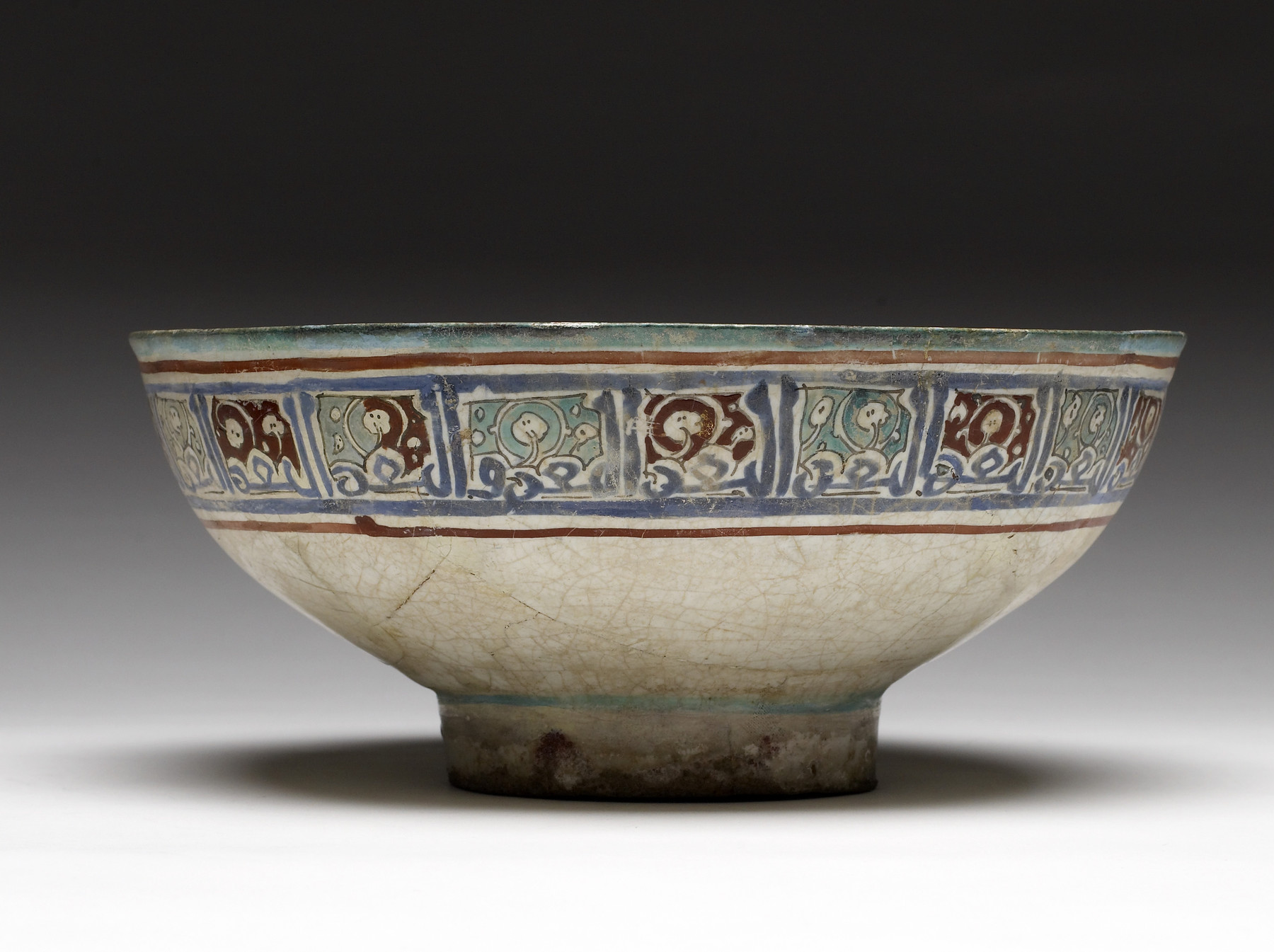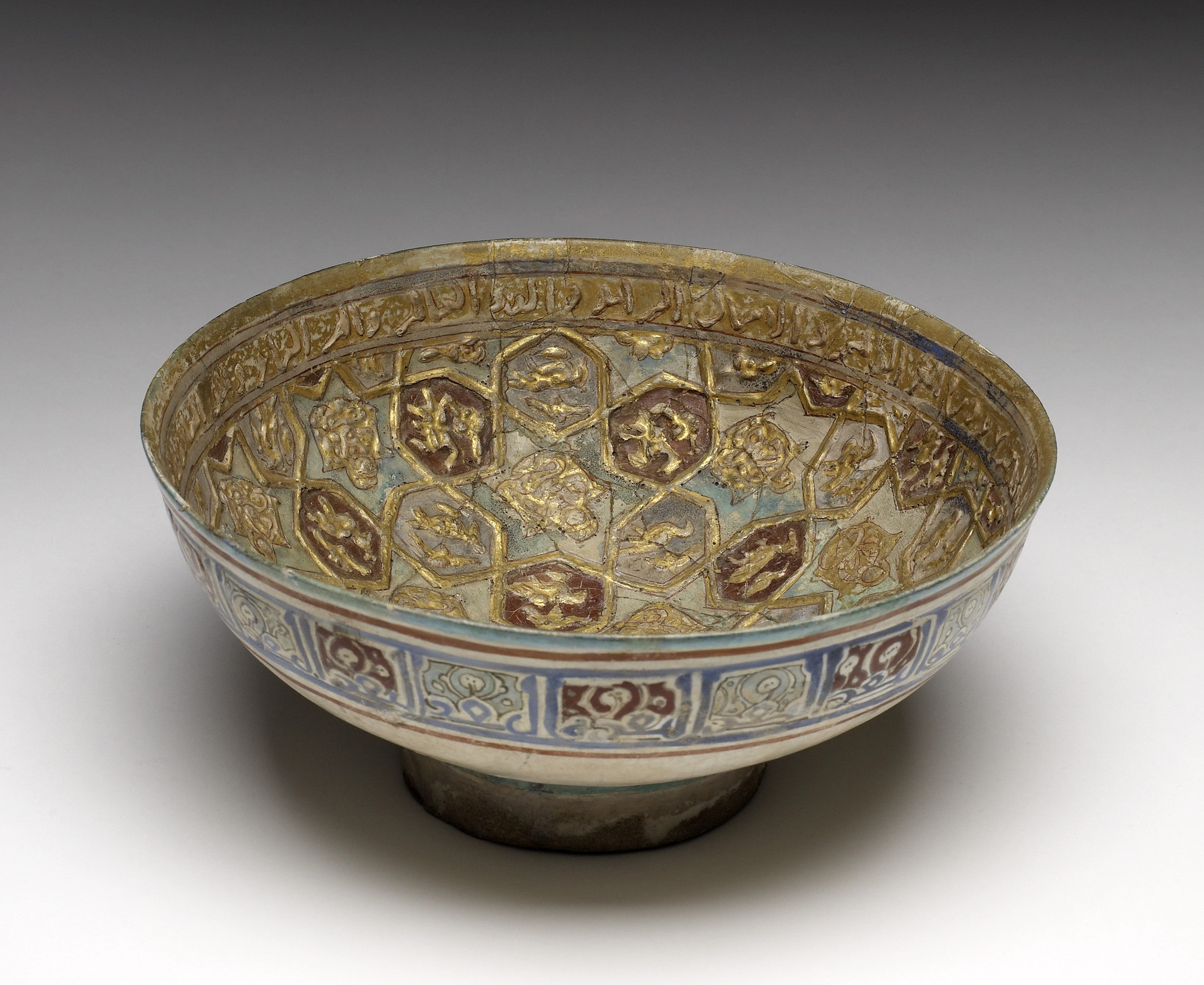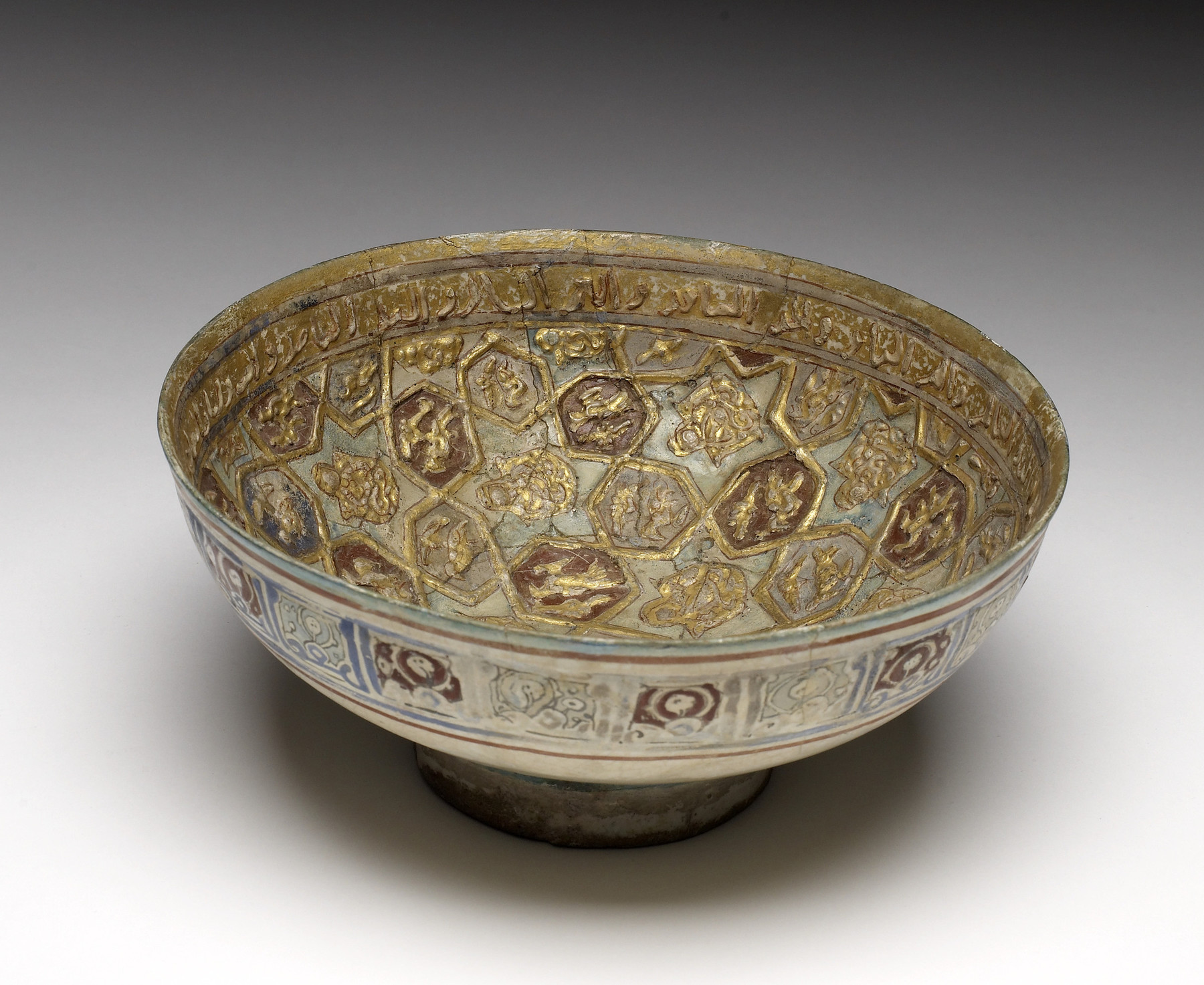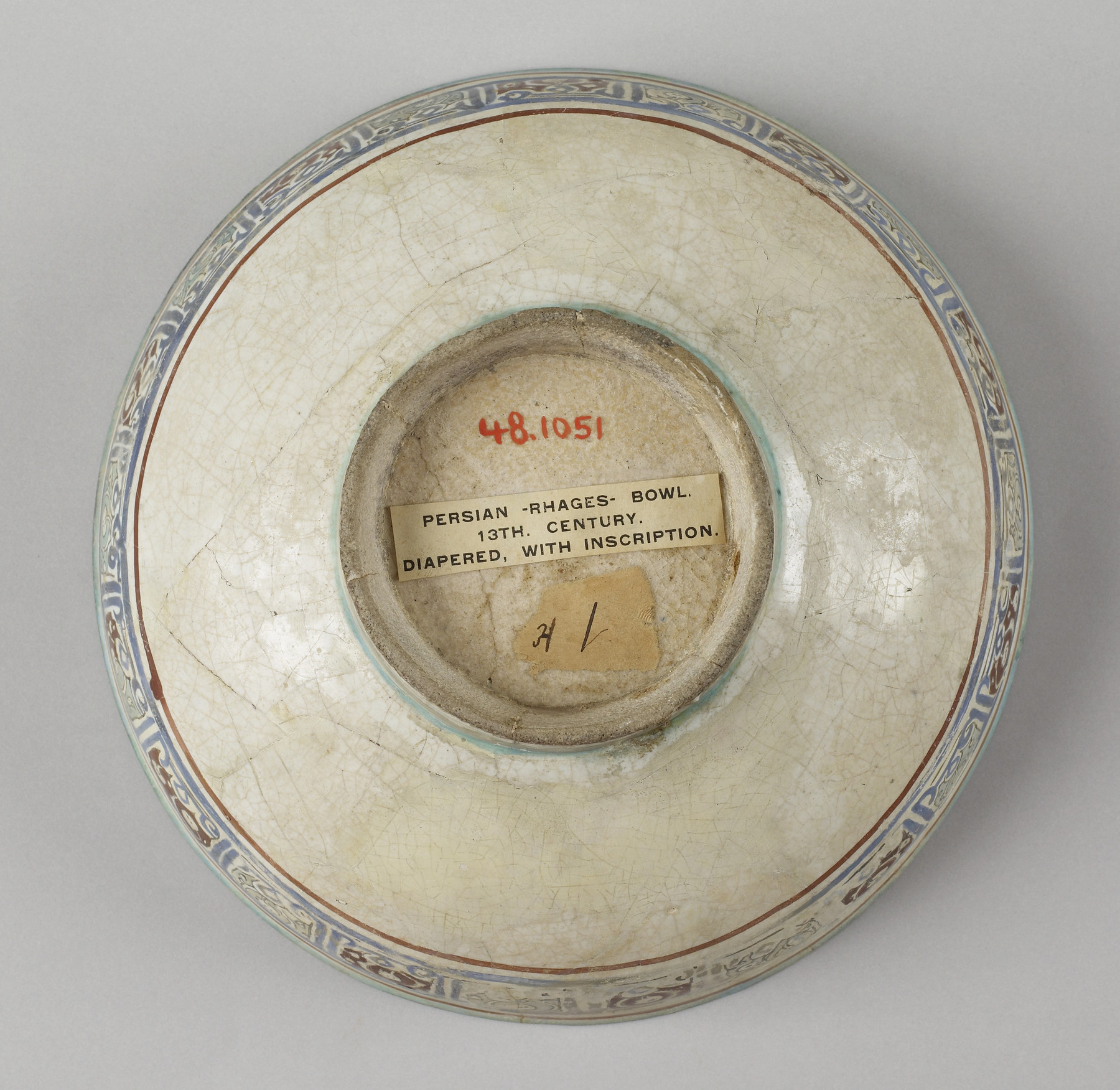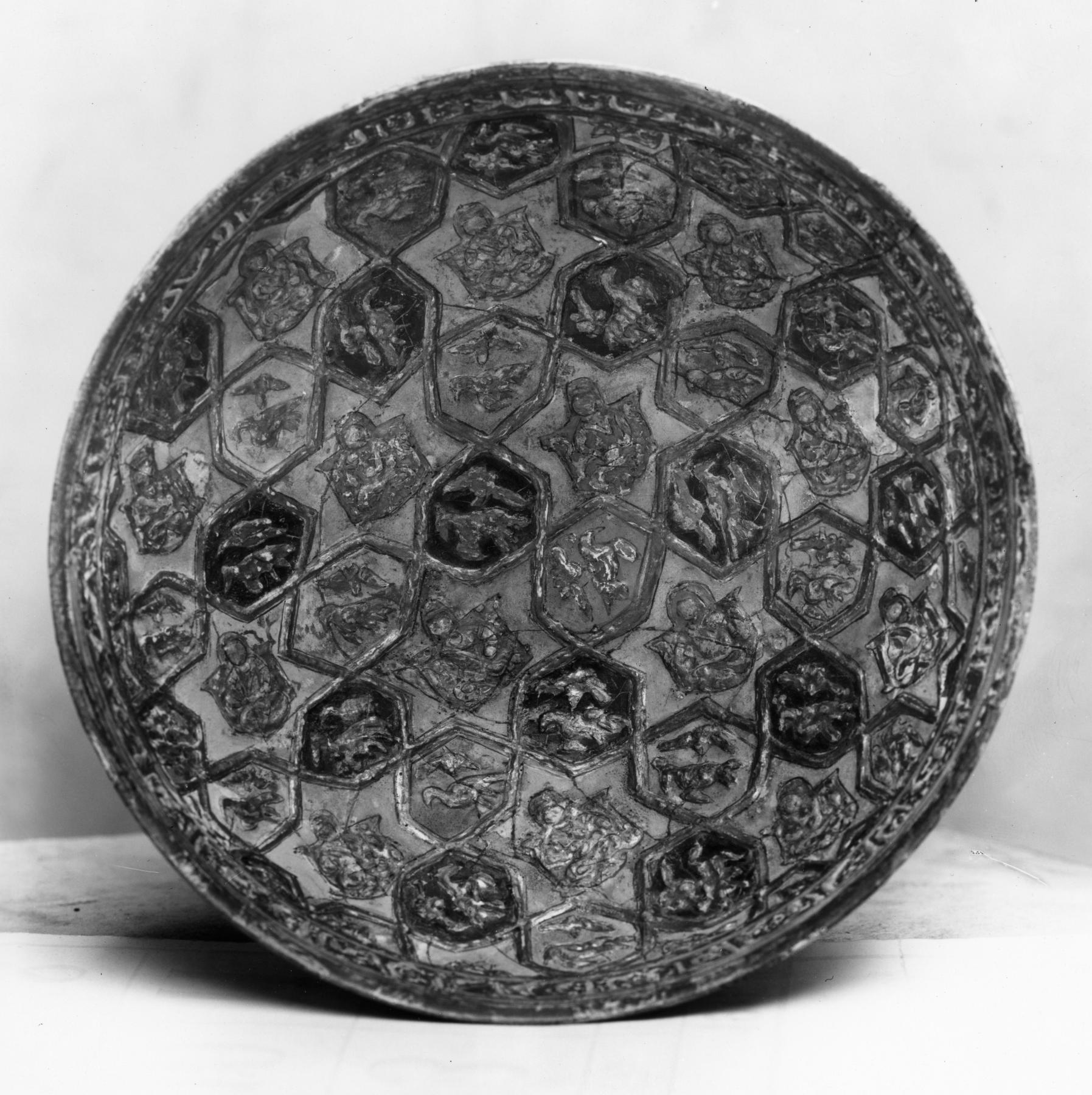Bowl with Star and Hexagonal Design
Mina’i is a modern collectors’ term for ceramics made in Iran during the late 12th to early 13th centuries. The term mina’i, translates as “enamelled” in Persian, designating the colored glass pigments used to paint detailed figural decoration on vessels or tiles, which were then fixed on the ceramic base by multiple firings. The use of a wide range of colors, including turquoise, red, green, purple, and black, also led these types of ceramics to be called by the Persian term “haft rang,” or “seven colors.” This footed bowl incorporates a number of colors frequently found on mina’i, such as blue, red, and gidling. The hexagonal and star design incorporates gilded outlines of seated figures and birds with their wings outstretched. This scene is encircled by a raised naskhi inscription on the inner rim set against a gold background. The kufic inscription on the outer rim seems to be a repetition of the same word.
Provenance
Provenance (from the French provenir, 'to come from/forth') is the chronology of the ownership, custody, or location of a historical object. Learn more about provenance at the Walters.
Dikran Kelekian, Constantinople and Paris, [date of acquisition unknown], by purchase [said to have been found at Rhadjes]; Henry Walters, Baltimore, 1914, by purchase; Walters Art Museum, 1931, by bequest.
Measurements
H: 3 5/8 × W: 8 3/8 in. (9.21 × 21.3 cm)
Credit Line
Acquired by Henry Walters, 1914
Location in Museum
Not on view
Accession Number
In libraries, galleries, museums, and archives, an accession number is a unique identifier assigned to each object in the collection.
In libraries, galleries, museums, and archives, an accession number is a unique identifier assigned to each object in the collection.
48.1051


